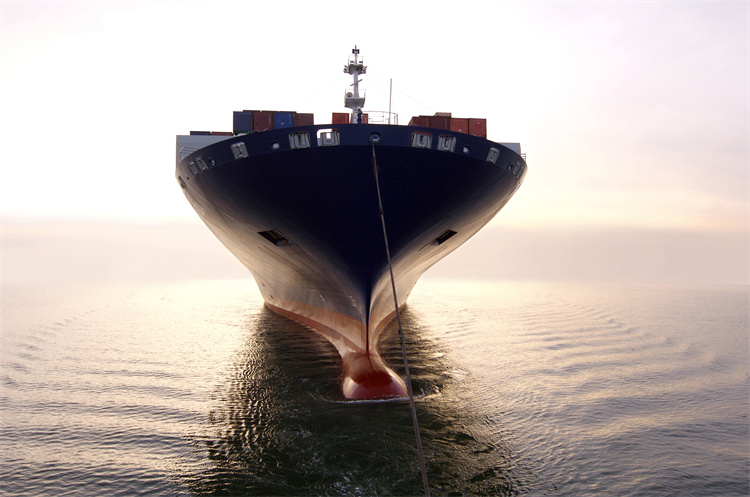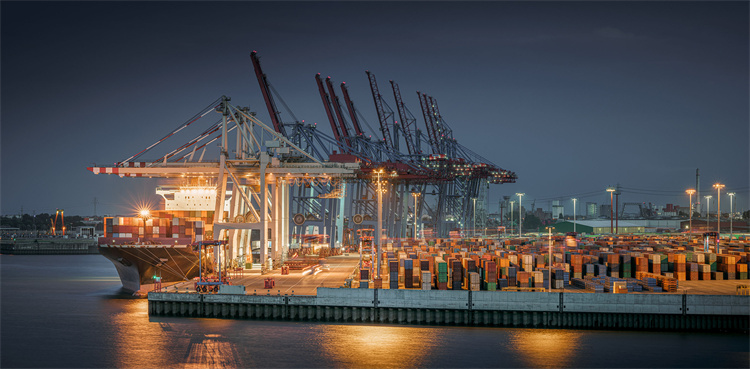Freight Shipping Methods: Choosing the Right Type

Choosing the right freight shipping method is crucial for your business. It impacts delivery speed, cost, and customer satisfaction. Over 55% of businesses prioritize faster delivery services to meet customer expectations. You must consider factors like cost, speed, and reliability. For instance, ocean shipping forms the backbone of global trade, while air freight is expected to handle 20% of e-commerce cargo by 2030. Understanding these elements helps you make informed decisions, ensuring your supply chain remains efficient and competitive.
Understanding Freight Shipping
Freight shipping plays a vital role in the logistics of your business. It involves the bulk transportation of goods, ensuring that products reach their destinations efficiently. Understanding freight shipping helps you make informed decisions about how to move your goods effectively.
Definition and Importance
What is Freight Shipping?
Freight shipping refers to the process of transporting large quantities of goods from one location to another. This can involve various modes of transport, such as air, sea, rail, and road. Each mode offers unique benefits and challenges, allowing you to choose the best option for your specific needs. As a Logistics Professional notes, "Freight shipping is crucial for transporting goods across the country, and there are various modes available to cater to different shipment requirements."
Why is it Important for Businesses?
Freight shipping is essential for businesses because it ensures that products are delivered to customers on time. This impacts customer satisfaction and your company's reputation. Efficient freight shipping can also reduce costs and improve supply chain management. According to a Shipping Analyst, "Freight shipping represents an essential part of logistics for your business: the bulk transportation of goods."
Key Factors to Consider
When choosing a freight shipping method, several key factors should guide your decision:
Cost
Cost is a primary consideration in freight shipping. Different methods come with varying price tags. Air freight, for example, is often more expensive than sea freight. You need to balance cost with other factors like speed and reliability to find the most cost-effective solution.
Speed
Speed is crucial, especially if you need to meet tight deadlines. Air freight offers the fastest delivery times, making it ideal for urgent shipments. However, if time is not a critical factor, slower methods like sea or rail freight might be more suitable.
Reliability
Reliability ensures that your goods arrive safely and on time. Some shipping methods are more reliable than others. For instance, road freight can be affected by traffic and weather conditions, while rail freight tends to be more consistent.
Nature of Goods
The nature of your goods also influences your choice of freight shipping. Perishable items may require faster shipping methods, while bulky or heavy goods might be better suited for sea or rail transport. Understanding the specific needs of your products helps you select the most appropriate shipping method.
Types of Freight Shipping Methods

Choosing the right freight shipping method can significantly impact your business operations. Each method offers unique advantages and disadvantages, making it essential to understand which option best suits your needs.
Air Freight
Air freight stands out as the fastest shipping method available. It is ideal for urgent deliveries and high-value goods.
Advantages of Air Freight
Speed: Air freight provides the quickest delivery times, making it perfect for time-sensitive shipments.
Reliability: Airlines adhere to strict schedules, ensuring timely arrivals.
Global Reach: Air freight connects you to almost any destination worldwide.
Disadvantages of Air Freight
Cost: Air freight is the most expensive shipping method due to fuel and operational costs.
Capacity Limitations: Aircraft have limited cargo space, restricting the size and weight of shipments.
Environmental Impact: Air freight has a higher carbon footprint compared to other methods.
Best Use Cases for Air Freight
Urgent medical supplies
High-value electronics
Perishable goods requiring quick delivery
Sea Freight
Sea freight is a cost-effective option for transporting large volumes of goods over long distances.
Advantages of Sea Freight
Economical: Sea freight offers lower costs, especially for bulk shipments.
Capacity: Ships can carry large and heavy cargo, making them suitable for oversized items.
Versatility: Sea freight accommodates various types of goods, including hazardous materials.
Disadvantages of Sea Freight
Speed: Sea freight is slower than air and road transport, often taking weeks for delivery.
Weather Dependency: Shipments can face delays due to adverse weather conditions.
Complex Documentation: International sea freight requires extensive paperwork and compliance with regulations.
Best Use Cases for Sea Freight
Bulk commodities like coal or grain
Large machinery and equipment
Long-distance international trade
Rail Freight
Rail freight offers a balance between cost and speed, making it a reliable choice for land transportation.
Advantages of Rail Freight
Cost-Effective: Rail freight is cheaper than air and road for long-distance land transport.
Energy Efficiency: Trains consume less fuel per ton-mile, reducing environmental impact.
Reliability: Rail schedules are less affected by traffic and weather conditions.
Disadvantages of Rail Freight
Limited Reach: Rail networks do not cover all areas, requiring additional transport modes.
Flexibility: Rail freight lacks the flexibility of road transport for door-to-door delivery.
Infrastructure Dependency: Rail freight relies on existing rail infrastructure, which may not be available everywhere.
Best Use Cases for Rail Freight
Heavy industrial goods
Long-distance domestic shipments
Intermodal transportation combining rail and truck
Understanding these freight shipping methods helps you make informed decisions. By evaluating the advantages and disadvantages of each option, you can choose the most suitable method for your business needs.
Road Freight
Road freight remains a popular choice for transporting goods due to its flexibility and accessibility. It involves the use of trucks to move products over short and long distances, making it a versatile option for many businesses.
Advantages of Road Freight
Flexibility: Road freight offers unmatched flexibility. You can transport goods directly from your warehouse to the customer's doorstep without the need for additional handling. This door-to-door service simplifies logistics and reduces the risk of damage.
Accessibility: Trucks can reach areas that other modes of transport cannot. Whether you need to deliver to urban centers or remote locations, road freight provides access to a wide range of destinations.
Cost-Effectiveness for Short Distances: For short-haul shipments, road freight often proves more economical than air or rail. You can save on costs while ensuring timely deliveries.
Variety of Options: Road freight includes various methods such as Full Truckload (FTL), Less-than-Truckload (LTL), and Partial Truckload (PTL). Each option caters to different shipment sizes and needs, allowing you to choose the most suitable method.
Disadvantages of Road Freight
Traffic and Weather Delays: Road freight can face delays due to traffic congestion and adverse weather conditions. These factors can affect delivery schedules and reliability.
Environmental Impact: Trucks contribute to carbon emissions and environmental pollution. While efforts to reduce emissions continue, road freight remains less eco-friendly compared to rail or sea transport.
Weight and Size Limitations: Trucks have weight and size restrictions. Oversized or heavy shipments may require special permits or alternative transport methods.
Best Use Cases for Road Freight
Local and Regional Deliveries: Road freight excels in delivering goods within cities or regions. Its flexibility and speed make it ideal for local distribution.
Retail and Consumer Goods: For retail businesses, road freight ensures quick restocking of shelves and timely delivery to stores.
Intermodal Transportation: Combining road freight with other modes, such as rail, enhances efficiency. Intermodal shipping reduces fuel use and lowers costs, providing a reliable solution for long-distance transport.
By understanding the advantages and limitations of road freight, you can make informed decisions that align with your business needs. Whether you prioritize speed, cost, or accessibility, road freight offers a viable option for various shipping requirements.
Choosing the Right Freight Shipping Method

Selecting the right freight shipping method can significantly impact your business's efficiency and cost-effectiveness. To make an informed decision, you need to assess your needs, evaluate costs, and consider environmental impacts.
Assessing Your Needs
Understanding your specific shipping requirements is crucial. You should analyze the size and weight of your shipments and consider delivery timeframes.
Analyzing Shipment Size and Weight
The size and weight of your goods play a pivotal role in determining the most suitable freight shipping method. For instance, rail freight offers a reliable and economical solution for transporting heavy and bulky items over long distances. Trains provide a cost-effective way to move large quantities of goods, making them ideal for industries dealing with substantial shipments. On the other hand, road freight excels in short-distance deliveries, offering flexibility and accessibility for hyperlocal or intra-city shipments. Trucks can efficiently handle various shipment sizes, from small parcels to full truckloads.
Considering Delivery Timeframes
Delivery speed is another critical factor. If you need to meet tight deadlines, air freight provides the fastest option. It ensures quick delivery for urgent shipments, such as medical supplies or high-value electronics. However, if time is less of a concern, sea freight offers a more economical choice for long-distance international trade. Rail freight also provides a reliable option for domestic shipments, balancing speed and cost effectively.
Evaluating Costs and Budget
Cost considerations are essential when choosing a freight shipping method. You should compare quotes from different carriers and understand any hidden costs.
Comparing Quotes from Different Carriers
Obtaining quotes from multiple carriers allows you to compare prices and services. Each freight shipping method comes with its own cost structure. Air freight, while fast, tends to be more expensive due to fuel and operational costs. Sea freight, on the other hand, offers lower costs for bulk shipments. Rail freight provides a cost-effective solution for long-distance land transport, while road freight proves economical for short-haul deliveries.
Understanding Hidden Costs
Hidden costs can affect your budget. These may include fuel surcharges, handling fees, and customs duties. Understanding these additional expenses helps you make a more accurate cost assessment. For instance, international sea freight requires extensive documentation and compliance with regulations, which can add to the overall cost.
Considering Environmental Impact
Environmental considerations are becoming increasingly important in freight shipping. You should explore eco-friendly shipping options and ensure compliance with regulations.
Eco-friendly Shipping Options
Eco-friendly shipping options help reduce your carbon footprint. Rail freight stands out as an energy-efficient choice, consuming less fuel per ton-mile compared to road or air transport. Intermodal transportation, which combines rail and road, offers a cost-effective and environmentally friendly strategy. This approach lowers emissions and enhances sustainability.
Regulations and Compliance
Compliance with environmental regulations is crucial. Different regions have specific requirements for freight shipping, especially concerning emissions and waste management. Staying informed about these regulations ensures that your shipping practices align with legal standards and contribute to environmental preservation.
By carefully assessing your needs, evaluating costs, and considering environmental impacts, you can choose the most suitable freight shipping method for your business. This informed decision-making process enhances your supply chain's efficiency and supports your company's sustainability goals.
JUSDA's Role in Freight Shipping
JUSDA plays a pivotal role in freight shipping by offering comprehensive solutions tailored to meet diverse business needs. With a robust network and advanced technology, JUSDA ensures efficient and reliable transportation across various modes.
JUSDA's Comprehensive Solutions
Air Transport Services
JUSDA provides efficient air transport services that cater to urgent and high-value shipments. You can rely on JUSDA for quick delivery times and global reach. The company leverages its extensive network to ensure your goods reach their destination promptly. This service is ideal for businesses that prioritize speed and reliability in freight shipping.
Ocean Shipping Solutions
For businesses looking to transport large volumes of goods cost-effectively, JUSDA's ocean shipping solutions offer an excellent choice. You benefit from lower costs and the ability to move bulky items over long distances. JUSDA handles complex documentation and compliance, ensuring a smooth shipping process. This makes ocean freight a viable option for international trade.
Rail and Road Transport Options
JUSDA offers rail and road transport options that balance cost and speed. Rail freight provides an energy-efficient solution for long-distance land transport, while road freight offers flexibility and accessibility. You can choose the most suitable method based on your shipment size, weight, and delivery timeframe. JUSDA's expertise in these areas ensures your freight shipping needs are met efficiently.
Value-Added Services by JUSDA
Cloud Warehousing
JUSDA enhances your supply chain with cloud warehousing solutions. This service allows you to manage inventory in real-time, improving efficiency and reducing costs. You gain access to a vast warehouse network, ensuring your goods are stored safely and securely. Cloud warehousing supports seamless integration with your logistics operations, making freight shipping more streamlined.
JusLink Intelligent Supply Chain
JUSDA's JusLink intelligent supply chain integrates IoT, cloud computing, and big data to enhance visibility and collaboration. You benefit from real-time information sharing, which improves decision-making and operational efficiency. This innovative platform supports your freight shipping needs by providing insights into shipment status, inventory levels, and potential disruptions. JusLink empowers you to optimize your supply chain and achieve better outcomes.
By choosing JUSDA, you leverage a comprehensive suite of services that enhance your freight shipping operations. Whether you need fast air transport, economical ocean shipping, or flexible road and rail options, JUSDA delivers solutions that align with your business goals. The value-added services further support your logistics strategy, ensuring efficiency and sustainability.

JUSDA Solutions
To provide you with professional solutions and quotations.
Choosing the right freight shipping method is crucial for your business's success. It impacts delivery speed, cost, and customer satisfaction. To make an informed decision, consider the nature of your goods, delivery timeframes, and budget constraints. Evaluate each freight shipping option carefully. Air freight offers speed, while sea freight provides cost-effectiveness for bulk shipments. Rail freight balances cost and speed, and road freight offers flexibility. Always weigh these factors before deciding. By doing so, you ensure efficient and reliable freight shipping that aligns with your business goals.
See Also
Revealing the Latest in Sea Freight Logistics for 2024
An In-depth Look at the Future of Less Than Truckload Freight
Maximizing Savings in Logistics: Your Complete Handbook
Exploring Top Global Logistics Companies: A Comprehensive Overview
Unveiling 5 Cutting-edge Strategies for Supply Chain Optimization
